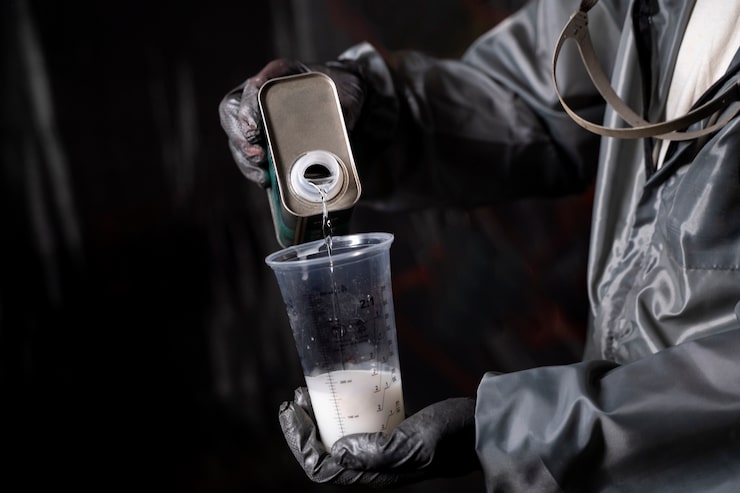When asking “What is the difference between electrostatic coating and anodizing?”, many engineers, manufacturers, and product designers want to understand how these two finishing processes compare in terms of durability, appearance, environmental impact, and cost. Electrostatic coating is a surface finishing method where charged powder or liquid paint particles are sprayed onto a grounded surface, creating an even layer that is then cured to form a solid film. Anodizing, on the other hand, is an electrochemical process that thickens the natural oxide layer on the surface of aluminum or other non-ferrous metals, creating a harder, corrosion-resistant, and sometimes decorative finish.

Understanding the differences begins with the process itself. In electrostatic coating, the substrate is first cleaned and prepared, ensuring no contaminants remain. A spray gun applies an electrical charge to the coating particles, which are attracted to the grounded surface. This charged attraction allows for even coverage, even on complex shapes. After application, the coated item is typically baked in an oven where the coating melts, flows, and cures into a continuous film. Anodizing, in contrast, starts with immersing the metal in an acid electrolyte bath, such as sulfuric acid, and passing an electrical current through the solution. The metal acts as the anode, causing oxygen ions to combine with the surface metal atoms, building a controlled oxide layer.
One major difference is the materials they are applied to. Electrostatic coating can be applied to metals like steel, aluminum, and even certain plastics if pretreated correctly. Anodizing, however, is primarily used on aluminum and its alloys, and in some cases on magnesium and titanium. This limitation is due to the electrochemical nature of anodizing, which requires a metal that can form a stable oxide layer.
In terms of finish characteristics, electrostatic coating offers a wider variety of colors, textures, and gloss levels. It can produce smooth, matte, glossy, metallic, and special-effect finishes. The coating layer sits on top of the substrate, providing both decorative appeal and protection. Anodizing, however, integrates the finish into the surface itself, meaning it will not peel or chip. The anodized layer can be dyed in various colors, but the range is typically narrower compared to powder coating, and the finish tends to have a metallic sheen that reflects the underlying aluminum structure.
When considering durability and performance, anodizing offers exceptional hardness and abrasion resistance, especially with thicker oxide layers. It provides excellent corrosion protection in harsh environments, particularly for marine or architectural applications. Electrostatic coating also provides strong corrosion and wear resistance, but its performance depends on the type of coating material—epoxy coatings offer great chemical resistance, while polyester coatings are better for UV stability. While anodizing resists fading due to being part of the metal, powder coatings can fade over time if exposed to intense sunlight without UV-stable pigments.
Another difference lies in thickness and dimensional impact. Electrostatic coatings typically range from 50 to 150 microns in thickness, creating a noticeable layer that can affect tight tolerances in mechanical parts. Anodizing layers are much thinner, generally between 5 and 25 microns for decorative purposes, and up to 50 microns for hard anodizing, which means they have less impact on dimensional accuracy.
From an environmental perspective, both processes can be considered eco-friendly compared to traditional solvent-based painting, but in different ways. Electrostatic powder coating produces no volatile organic compounds (VOCs) and overspray can be recovered and reused, reducing waste. Anodizing does not involve organic solvents but requires chemical baths, which must be managed carefully to prevent environmental harm. Modern anodizing facilities use closed-loop systems to recycle water and chemicals, minimizing impact.
When it comes to cost considerations, electrostatic coating can be more economical for small to medium runs, especially when color changes and design variations are required. The ability to coat various materials also makes it versatile for manufacturers. Anodizing tends to be more cost-effective for aluminum products in large quantities, especially when corrosion resistance is the main goal. However, the equipment and process requirements for anodizing are more specialized, limiting its use to facilities equipped for electrochemical processing.
In application fields, electrostatic coating is widely used in automotive parts, furniture, appliances, machinery components, and architectural structures where visual appearance is important alongside protection. Anodizing is common in aerospace components, marine equipment, consumer electronics housings, and architectural aluminum profiles where durability, wear resistance, and corrosion protection are critical, often combined with a clean metallic aesthetic.
Maintenance needs also differ. Electrostatic coatings are easy to clean with mild detergents and water, but once scratched or chipped, the damage can expose the substrate, requiring touch-up or recoating. Anodized surfaces are more scratch-resistant, and because the oxide layer is integral to the metal, minor damage does not cause peeling. However, anodized surfaces can still stain or discolor over time if exposed to certain chemicals, and restoring them may require re-anodizing.
In summary, the difference between electrostatic coating and anodizing can be understood through their processes, material compatibility, appearance, durability, environmental impact, and cost. Electrostatic coating provides flexibility in design, texture, and color, making it suitable for a wide variety of substrates and industries. Anodizing offers unmatched hardness, corrosion resistance, and longevity for aluminum products, making it ideal for applications where performance outweighs the need for varied aesthetics. Choosing between the two depends on the specific requirements of the project, including the type of material, environmental conditions, desired appearance, and budget.
For decision-makers in manufacturing and product design, knowing what is the difference between electrostatic coating and anodizing ensures the selection of the most appropriate surface treatment, balancing performance, appearance, and cost-effectiveness to achieve long-term value and product reliability.


